How to Track Your Competitors’ Website Traffic: Step-by-step
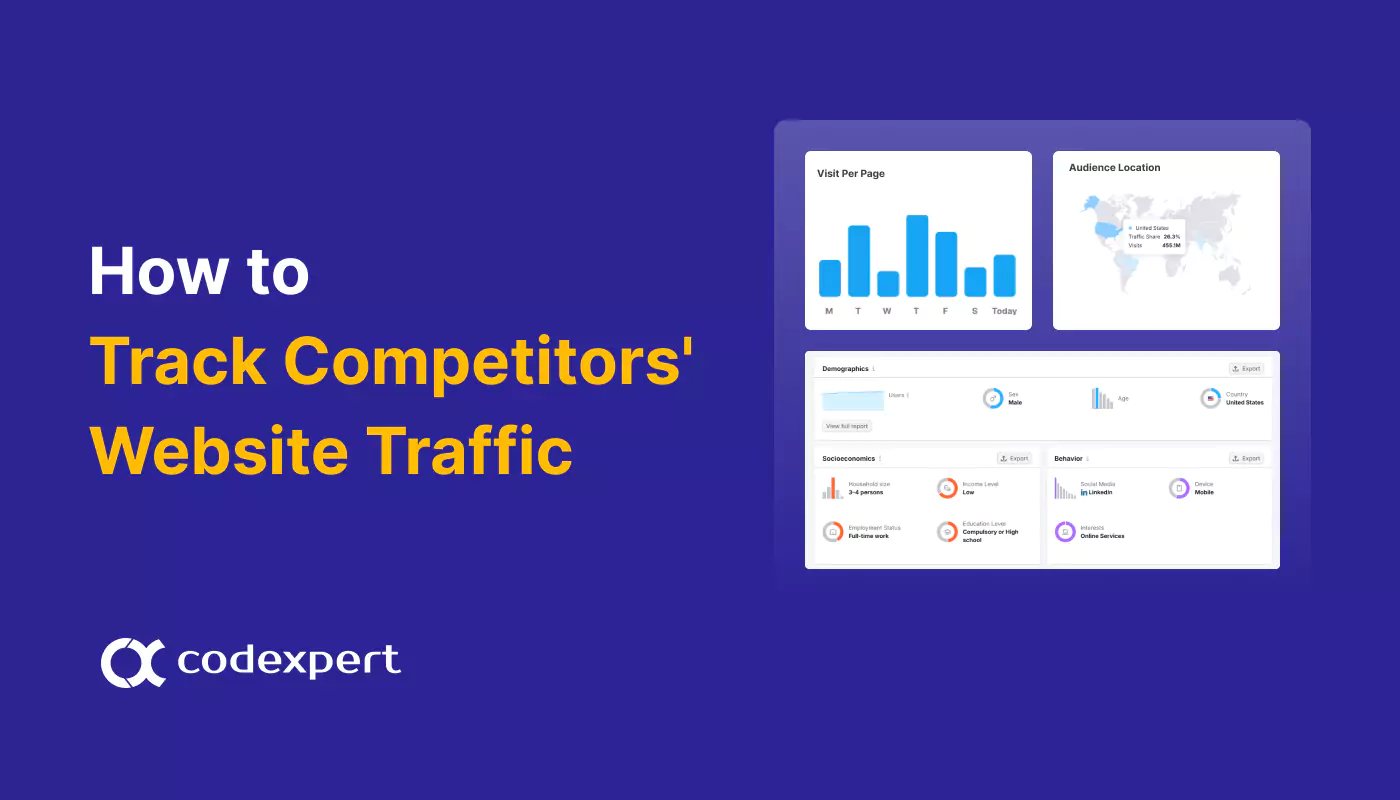
Starting your new business and don’t know what your competitors are doing?
Also, if you are looking for potential customers then knowing what your competitors are doing is very important. To easily get to your customers you have to find out what others are doing. There are many ways you can track your competitors. In this article, we’ll show you how you can do this. Let’s dive in!
Why Track and Analyze Your Competitors’ Website Traffic

If you know your competitors and their weaknesses you need the right strategy to gain an impactful outcome. Here are some key points on why you need to track and analyze your competitors to-
Identify Market Trends
Identifying what your competitors are doing and their trends is important. By analyzing competitor traffic patterns to spot emerging trends and adjust your strategy to stay relevant.
Benchmark Performance
You need to understand where your website stands by comparing key metrics, such as traffic volume and engagement, to competitors. This comparative assessment will help you measure your competitors performance relative to the market standards.
Optimize Content Strategy
Content is always the best option to market about your product. If you are in the WordPress industry then sharing content about WordPress products will market your product better. So you need to see which types of content drive traffic for competitors, helping you refine your content to attract similar audiences.
Enhance SEO and Keywords
Identify keywords for your products that will bring traffic to competitor sites. Then analyze the high-performing ones into your own SEO strategy to get the best results.
Step-by-step Guide to Track Competitors Website Traffic
Now that you understand why tracking your competitors’ traffic is essential, let’s explore a convenient and free way to monitor competitor website data. Here’s is a step-by-step guide:
Step 1: Identify Your Real Competitors
The first step in tracking your competitors’ website traffic is accurately identifying who your competitors are. This is not very difficult, but it is important to ensure you are tracking the right websites. Competitors generally fall into two categories. They are direct and Indirect Competitors. Here are some best ways to identify your competitors:
Market Analysis: Conducting a market analysis helps you better understand your target audience and the key players in your industry. A thorough report can clarify what problem your product addresses and why your business stands out from others in your niche.
Google Search Engine Results: One of the effective ways to identify your competitors is conducting a simple google search. For this, you need to type in keywords that are related to your business or industry and see which websites consistently appear on the top page. These are expected to be your key competitors.
For example, if you are looking for the best online business administration degrees, you can notice the top results are dominated by the reputable WordPress industries with a collection of WooCommerce alternative plugins.
So the final outcome is, you should focus on these types of listicles or websites.
Step 2: Analyze Competitor Website Traffic Metrics
Now let’s start with a wider overview. We’ll start measuring competitor website traffic. We’ll do more in-depth research after this. We are going to do this with the Semrush free traffic analysis tool.
First, go to Semrush website >> Traffic Analytics and enter your competitors website link into the Traffic Analytics, click the Analyze button.

You’ll discover the estimated site traffic and engagement. You will also find how they have changed over the time. You can also add a root domain to compare traffic between your other competitors’ website traffic. Add another competitor domain to the next empty box and click on the compare button.
Here you’ll find some new metrics. They are:
- Estimated total visits to your competitor website traffic of the current month
- Total unique visitors of that website
- Average page a person visits in one session
- Average time spent on the website
- Percentage of visitors who leave the website after visiting one page
These data are estimated and average. You can gain real numbers with Google Analytics.
Step 3: Evaluate User Trends, Source and Journeys
People fall for the trends but in business you need to understand what your audience expects to see in November. This can help you get ahead of the trend better than your competitors. You will discover this feature available when you add competitors on the root domain. After the traffic analytics section.

Here is just the overview of how the unique visitor trend will look like. You can not check this without a premium version.
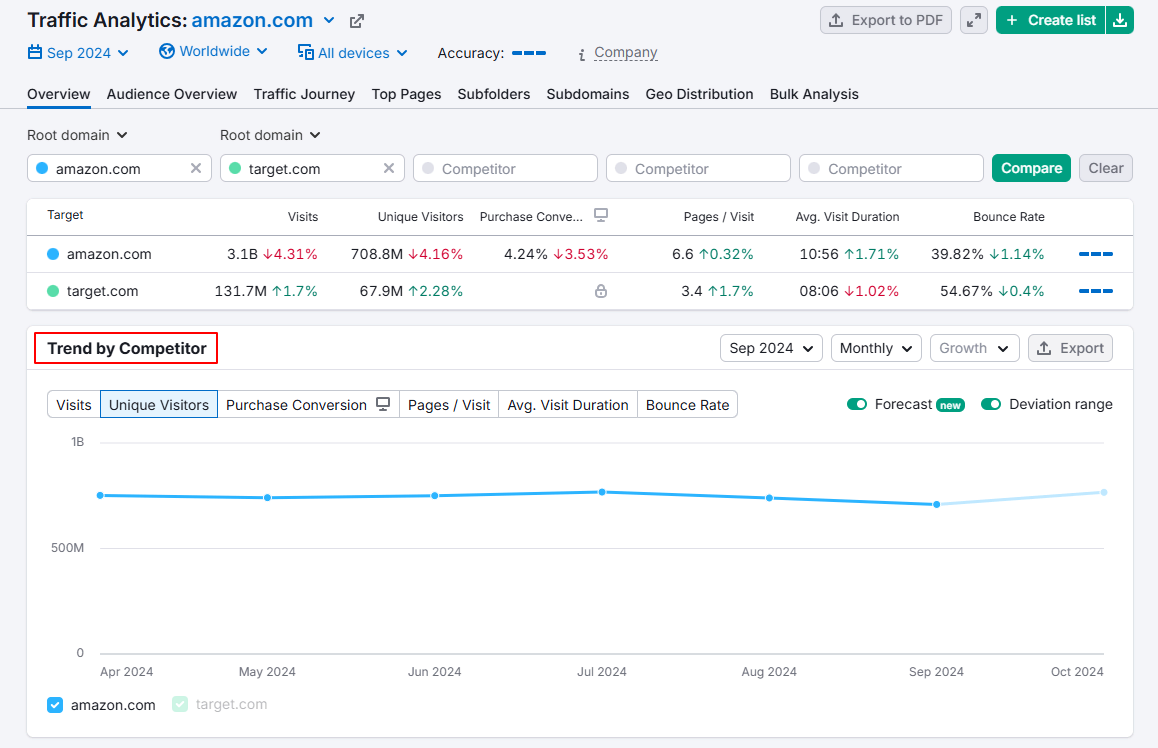
You can also get the information of their traffic source. Just below you can get which channel your competitors generate more traffic. What is the percentage of traffic they are getting, you can keep specific data from the growth section and export it for your personal use.
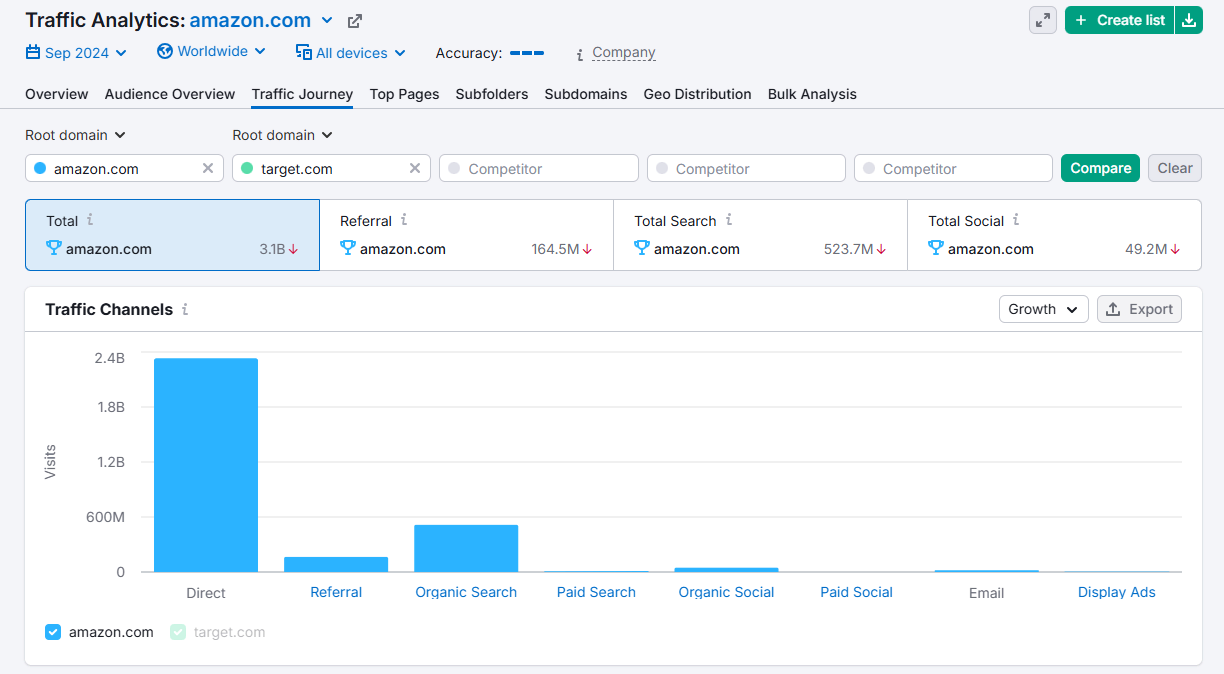
Also, you can target the country of your competitors when running any paid campaigns. It will be easier for you when you have this information altogether. There are more data which will help you gain more details about your competitor websites traffic.
Step 4: Compare User Experience of Competitors
Now at this part we’ll compare the user experience of your competitors. For this, Navigate to the analytics overview and provide the competitors domain. Then click the Compare button.

Sometimes you have to analyze the pages of your competitors’ audiences. Which pages they visit the most, their average visit time and as well as bounce rate. Comparing these metrics could give you a better overview of what they actually need.
Here is what these information means:
- Either Users find the content is helpful or not helpful
- The Promoted offer is good or bad
- Traffic is generating from the expected country or from a wrong country
Step 5: Check Out Top Pages And Subdomains
You can learn a lot about your competitors by researching from the competitors’ top pages, subdomains that drive the most traffic. To see your competitors’ Top Pages, navigate to their top page section. Here, You’ll find complete data including unique visitors, traffic channels for each page.
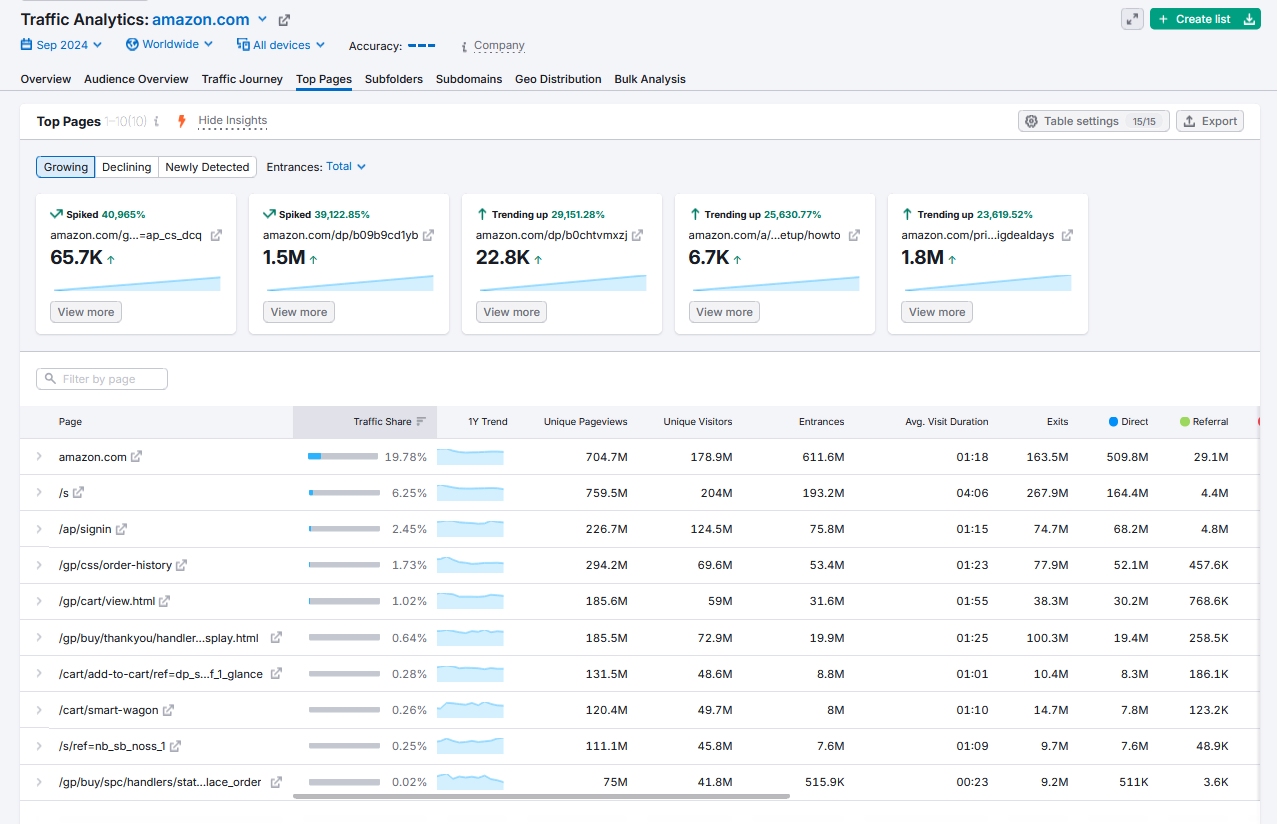
If you are interested in specific pages (like promoted posts or social media ads), filter by traffic channel to see which pages are bringing in the most visitors. You can also view traffic insights for competitors’ top subfolders and subdomains, broken down by traffic and channel.

Step 6: Monitor Competitor Web Traffic Globally
Finding your competitors global website traffic will give you more advanced access to compete with your competitors. You can track the global traffic of your competitors from the Semrush Geo Distribution tab.
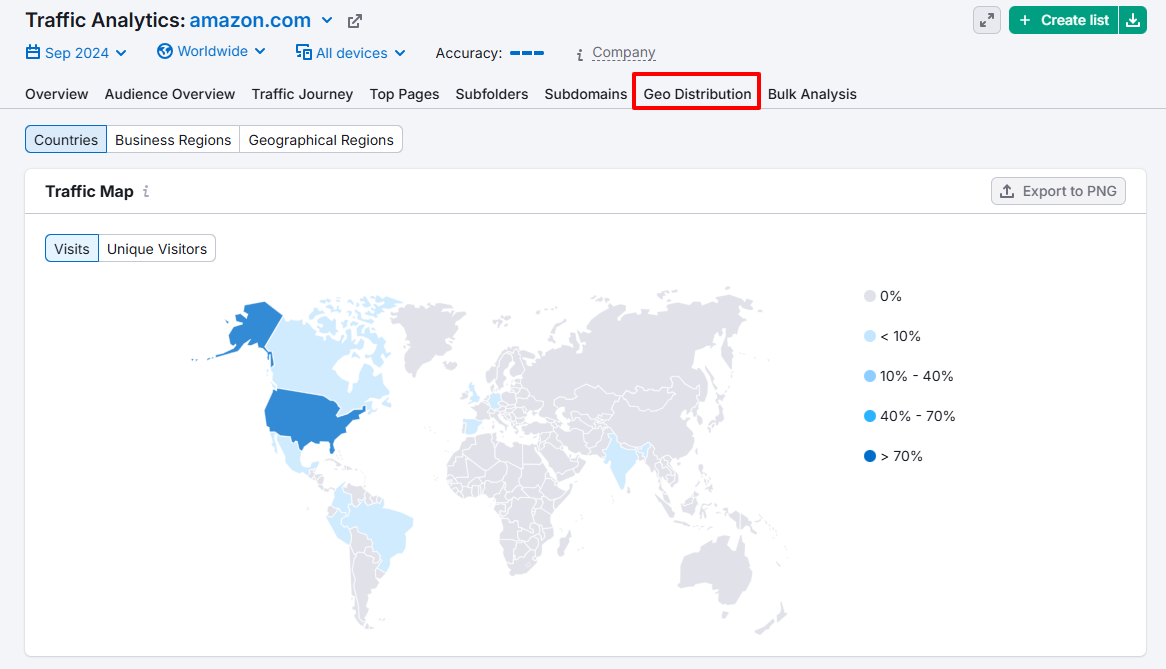
In this scenario, you can start by analyzing the traffic between countries, business regions, Geographical regions. If you dive more deeper into this section you can gain access to competitors’ visits and unique visitors.
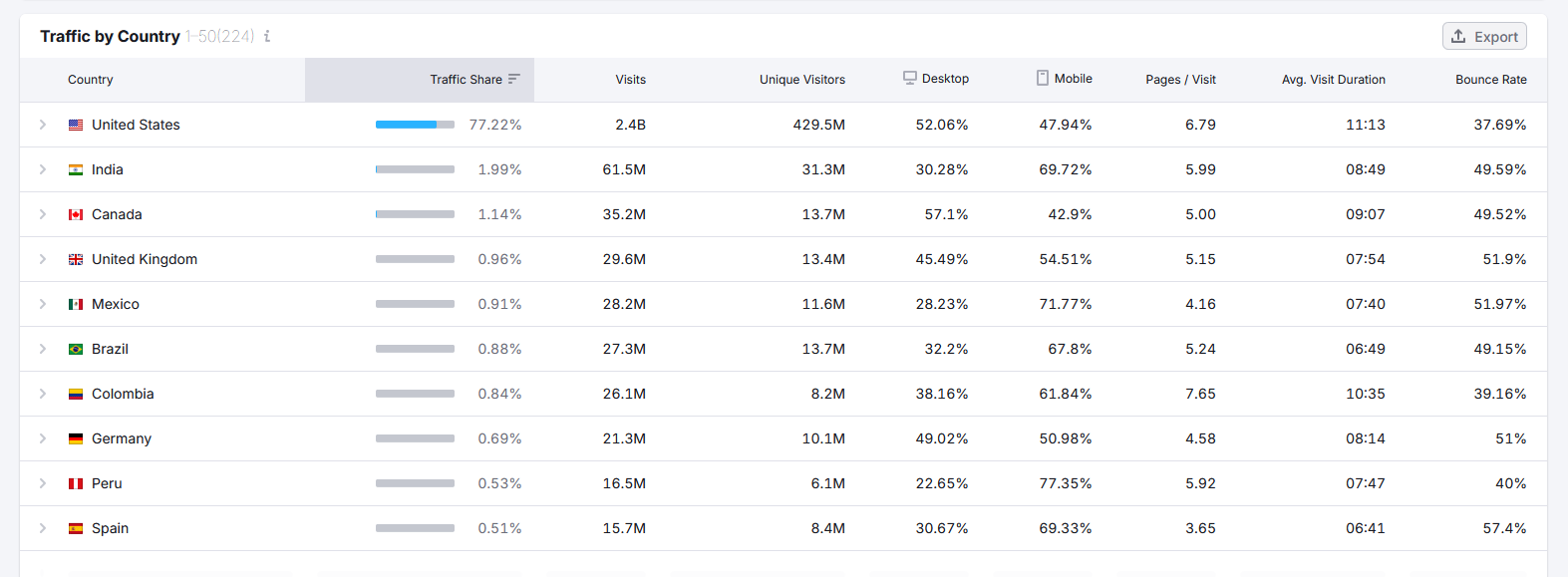
You can take a look at the growth trends of the traffic in various countries. Please review the below graph:
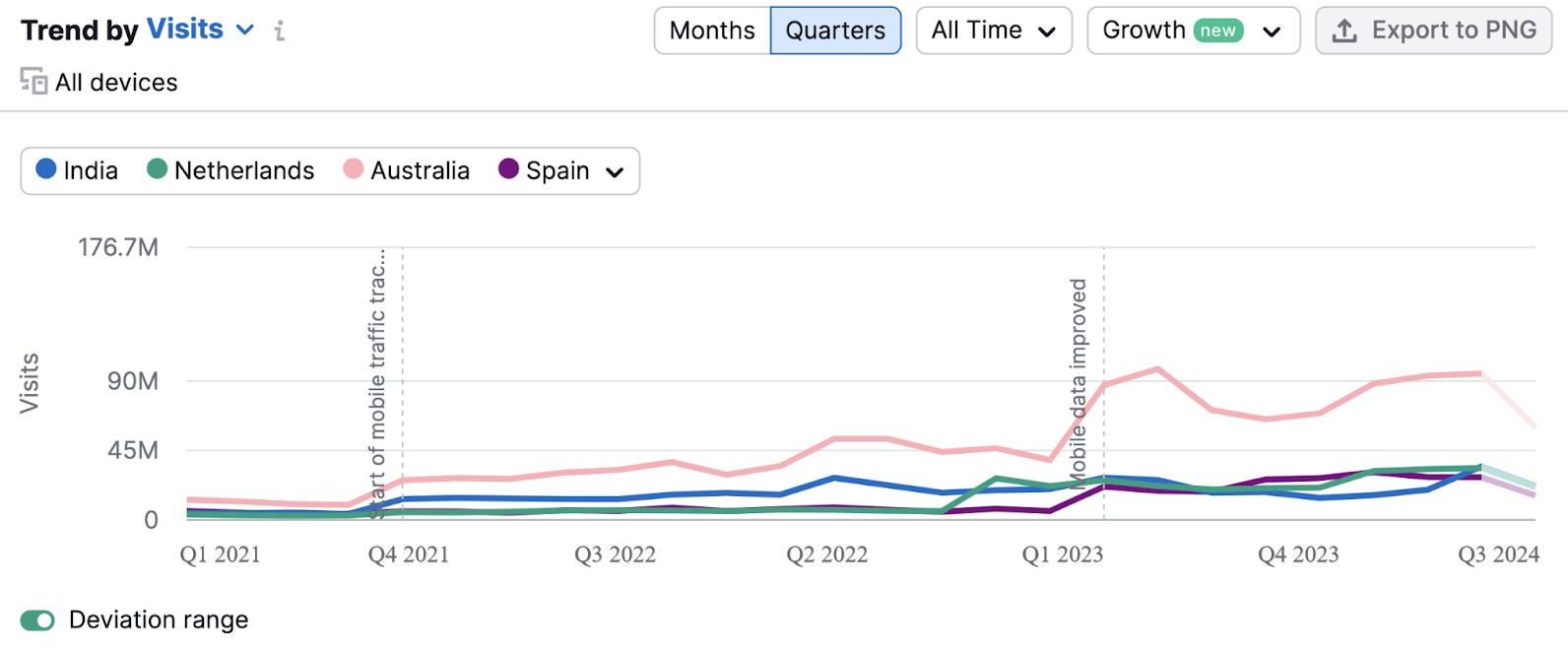
It shows where the traffic is rising. It could be a good idea to do some more research on your website competitors.
And if you check the traffic by country, it will show you the data for specific locations. You can get valuable insights like traffic share, unique page/views and visitors.
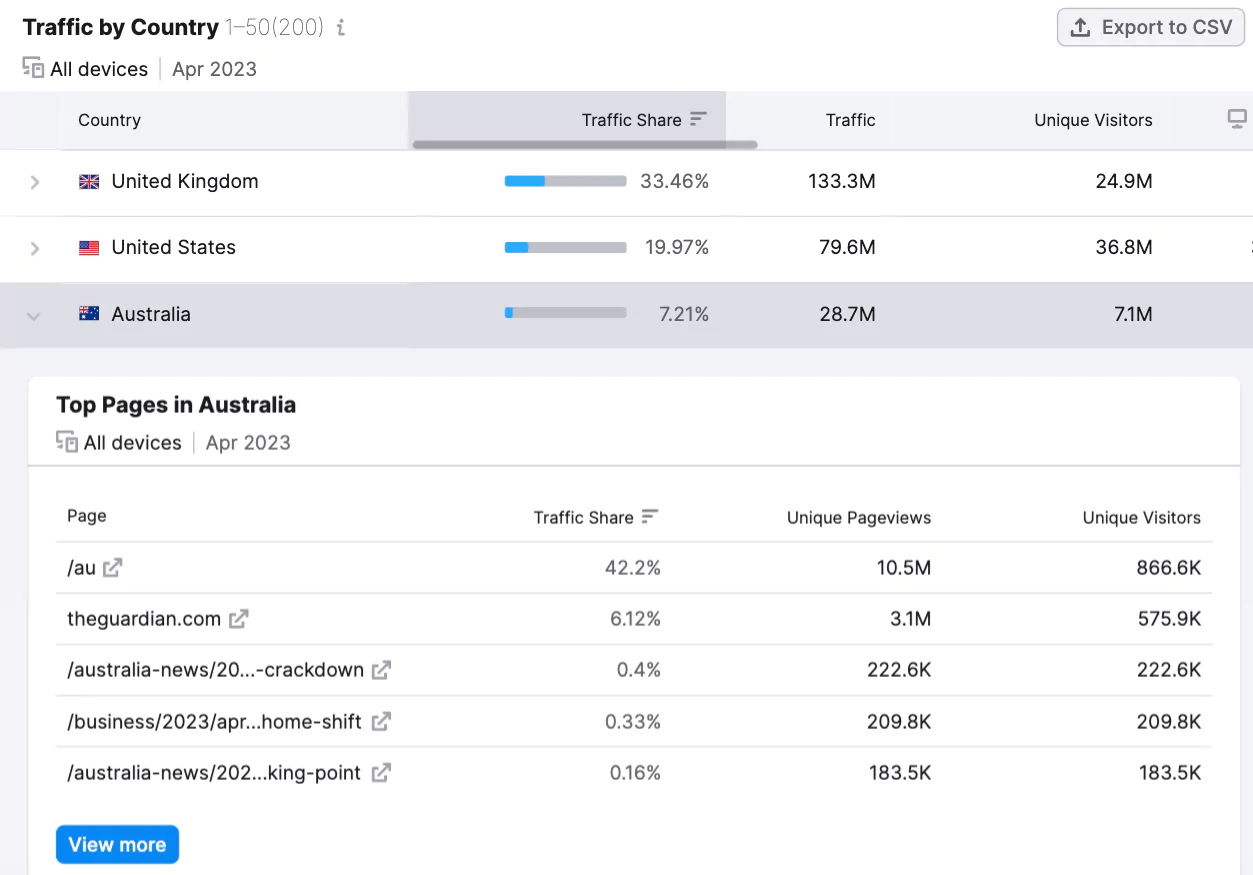
After visualizing these data, you found this market would be a best choice for a better future growth.
Step 7: Perform Organic Search
The most crucial part is performing organic search to identify the position changes of your competitor. Go to Organic Search tab just below at Traffic Analytics, provide the domain link and click on the Search button.

You can track the top changes in estimated traffic of your competitors.
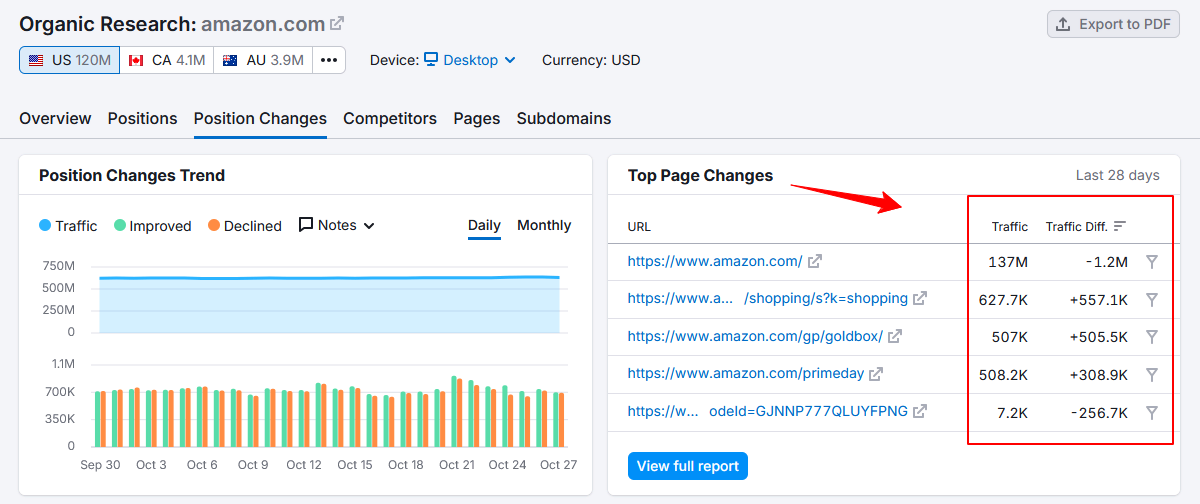
If you want to gain the insights whether your competitors traffic is gaining or losing click on the Semrush built in filter. It will be easier for you to get certain metrics for better analysis.

You can even track your competitors’ SERP if your competitors’ keywords have been dropped in or out.
Step 8: Create Audience Insights
Finally, create your audience insights to learn about your competitors audience overview. You can do this from the easily from the Traffic Analytics >> Audience Overview. This tab serves as an excellent starting point to understand your competitors demographics, socioeconomic and behavior.
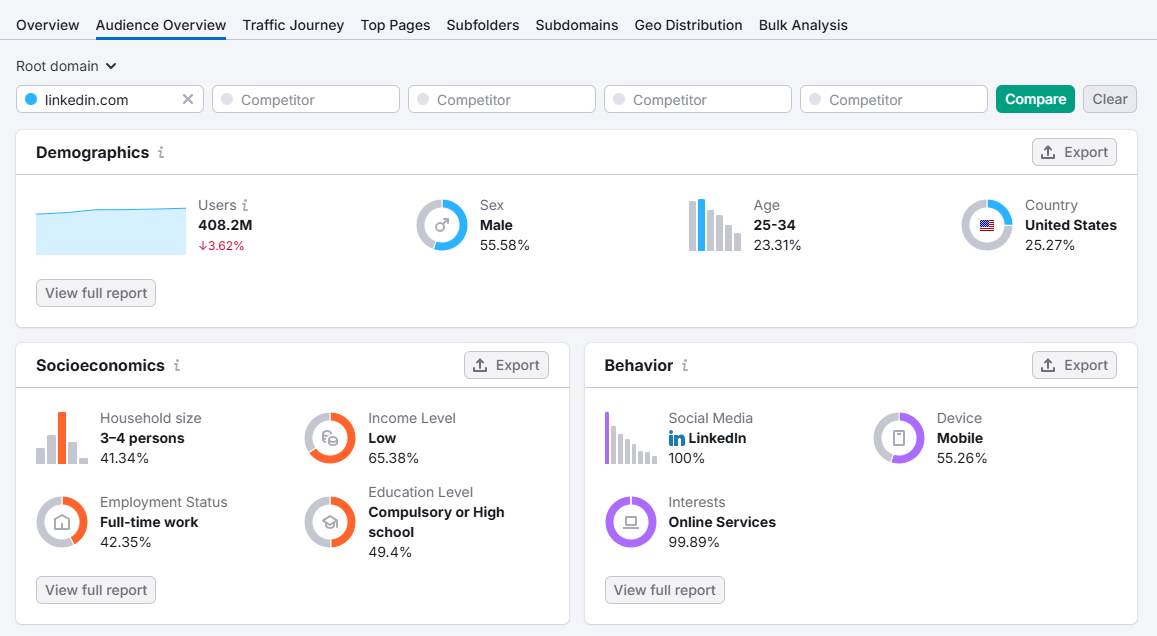
Final Words
Monitoring your competitors’ website traffic can give you valuable insights into their online presence and help you improve your own marketing strategies.
By following these methods using the tool, you can gather data on your competitors, monitor their SERP, evaluate their SEO efforts and use the information wisely to stay ahead in the competitive market.
So, start implementing these steps and reach your potential audiences easily.
About the Author
Erik Emanuelli has been in the online marketing game since 2010. Learn more about SEO and blogging from his experience.
Frequently Asked Questions (FAQs)
Q. Which tool is best to analyze competitors’ website traffic?
There are several amazing tools that will help you track and analyze your competitors’ websites. Semrush, Ahrefs, Similarweb
Q. How can I check the traffic of a website?
If you want to check the traffic of any website instantly, go to Semrush website. After that, login by creating an account. When you are done creating an account, provide the domain link and click on the Analyze button.
Q. How to find traffic sources in Semrush?
It’s pretty easy to find traffic sources using the Semrush. Here’s the quick step:
- Go to the semrush website
- Provide the domain link which you want to get the traffic sources.
- Then click on the Analyze button.
- After that, navigate to the traffic Journey.
From this tab you’ll be able to get the necessary data of their traffic sources.
Q. Can I see how much traffic another website gets?
Yes, tools like Semrush, Ahrefs, Simlarweb allow you to view competitor traffic data, including top pages, traffic sources, and engagement metrics like bounce rate and visit duration.
Subscribe to Our Newsletter
Get the latest WordPress tutorials, trends, and resources right in your inbox. No Spamming, Unsubscribe Anytime.

Thank you for subscribing to our newsletter!
Table of Content
- Why Track and Analyze Your Competitors’ Website Traffic
- Identify Market Trends
- Benchmark Performance
- Optimize Content Strategy
- Enhance SEO and Keywords
- Step-by-step Guide to Track Competitors Website Traffic
- Step 1: Identify Your Real Competitors
- Step 2: Analyze Competitor Website Traffic Metrics
- Step 3: Evaluate User Trends, Source and Journeys
- Step 4: Compare User Experience of Competitors
- Step 5: Check Out Top Pages And Subdomains
- Step 6: Monitor Competitor Web Traffic Globally
- Step 7: Perform Organic Search
- Step 8: Create Audience Insights
- Final Words
- About the Author
- Frequently Asked Questions (FAQs)
- Q. Which tool is best to analyze competitors’ website traffic?
- Q. How can I check the traffic of a website?
- Q. How to find traffic sources in Semrush?
- Q. Can I see how much traffic another website gets?













